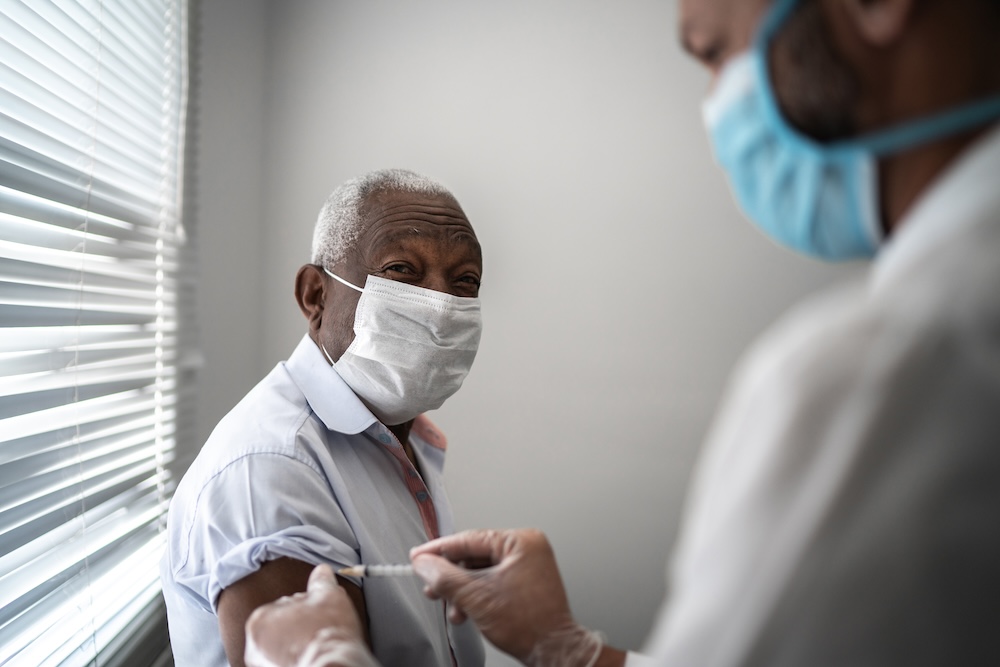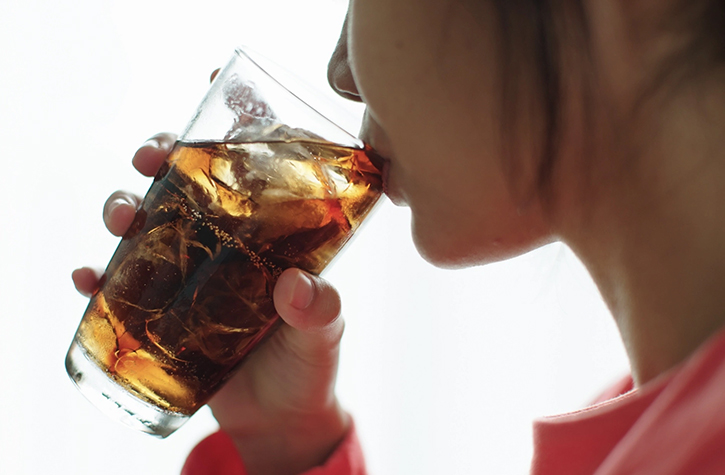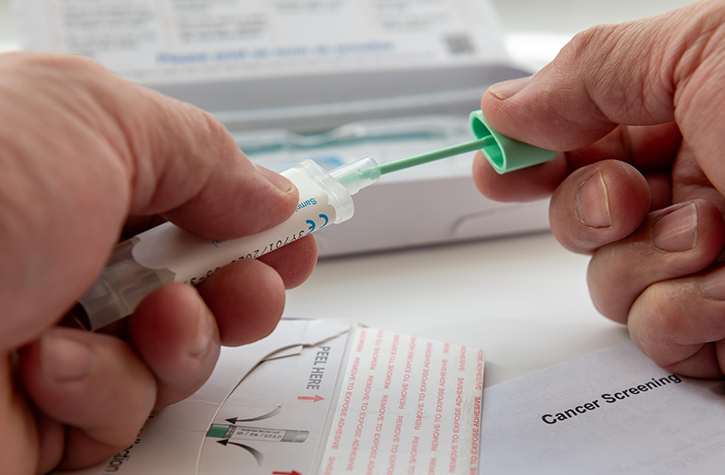Chuck Harlins was going to the gym four days a week, running two days and regularly making almond milk, vegetable and fruit smoothies. His wife, Priscilla, was doing her best to reach her goal of 15,000 steps a day and, like her husband, had lost weight and worked to keep it off.
But even after maintaining a healthy lifestyle for several years, the African American couple from Oakland still had high blood pressure. That qualified them for a Kaiser Permanente study designed to narrow the gap in hypertension control between black and white people.
“We were doing a lot of good stuff, but now we had to tighten it up some,” said Chuck Harlins, 58, whose father died at age 52 of congestive heart failure. “I was looking at the carbs and the sugars. I never looked at the sodium count.”
Kaiser’s Northern California Division of Research in June started enrolling about 600 black patients from its Oakland medical center in the study to reduce blood pressure. The research is part of a larger, $11 million federally funded grant to do a series of studies with UCSF over the next five years on stroke prevention in black people and young adults.
“We’ve known how to treat high blood pressure for a long time. Yet it still remains one of the most important challenges we face as clinicians, and stroke is a devastating impact of high blood pressure,” said Dr. Kirsten Bibbins-Domingo, a UCSF professor and principal investigator of the “Bring It Down” hypertension study.
Hypertension, stroke
High blood pressure, also called hypertension, is the top risk factor for strokes, which happen when the blood supply is cut off to part of the brain. Blood pressure is considered high if it’s above 140 over 90, and patients are considered under control if their reading is below that level.
Over time, uncontrolled blood pressure can harden the arteries and block small blood vessels. This not only increases the risk of stroke, but also is a major cause of heart disease.
African Americans are about 60 percent more likely than white people to have a stroke, and twice as likely to die from one.
“Hypertension tends to start earlier in blacks and African Americans, and they have much worse consequences of it,” said Dr. Stephen Sidney, a Kaiser senior research scientist and director of the larger hypertension study.
Racial disparity
The hypertension gap between black and white Americans is wide. Nationwide, about 42 percent of black men and 47 percent of black women over age 20 have high blood pressure, compared with 33 percent of white men and 31 percent of white women.
At Kaiser, that difference is much narrower, with just 5 percentage points separating black adults from white adults. That’s because the health system has made lowering blood pressure rates a priority for all patients, Kaiser and UCSF researchers said.
By focusing on a regimen of cheap, effective medications and close monitoring, Kaiser increased the percentage of Northern California patients with healthy blood pressure from 44 percent in 2001 to 87 percent in 2011.
But that small, stubborn disparity between black and white Kaiser patients persists. That’s baffling because all members of Oakland Kaiser have insurance coverage and access to health services, including medications, and therefore should have the same or similar health outcomes.
“We’re getting so good at controlling blood pressure in Kaiser. Why is there still this little difference in black and white patients?” said Dr. Mai Nguyen-Huynh, principal study investigator and director of the stroke centers in Kaiser’s Diablo service area, which includes central and eastern Contra Costa County and parts of Alameda County. “People are very interested in seeing what we learn.”
Looking for answers
Researchers say they really don’t know why African Americans are so disproportionately affected by hypertension, but they suspect diet, high rates of obesity and genetic factors that increase their sensitivity to salt and make them respond differently to certain blood pressure medications.
The study will hopefully help researchers identify how medication and lifestyle changes influence blood pressure.
“The most important thing is to stay healthy. If we can do that without pills, that’s wonderful,” said Dr. Joe Young, a primary care doctor at Kaiser’s Oakland hospital who is overseeing the Oakland study. “But if pills are needed, it’s much better to take the medication than to have uncontrolled blood pressure.”
Alternative treatments
Kaiser’s hypertension treatment typically involves a three-drug regimen and regular monitoring. As part of the ongoing Kaiser study, a group of about 300 participants receive that same treatment plus a fourth medication. The drug, also a generic, is believed to be effective in people who have been shown to be resistant to the standard three-drug combination.
An additional 300 people in the other arm of the study continue to take their regular blood pressure medications, but they also get intensive lifestyle and diet coaching.
A personal coach calls the participants weekly for the first month and then monthly for the remainder of the year, encouraging them to set and follow specific goals and answering any questions they may have. They’re asked to follow a special hypertension diet and can attend classes every other month to learn more about healthy cooking and other lifestyle changes.
The participants will be followed for another year, and the results are expected to be revealed after that. The results will be compared with data from a control group of about 3,000 African American members who are receiving Kaiser’s standard hypertension care.
This study, one in a series of studies that will take place as part of the grant, is not enrolling new participants.
Overcoming barriers
For April Allen, a Kaiser dietitian who serves as one of two personal coaches for study participants, the issue is personal. As an African American woman who grew up in Alabama, Allen said she understands the cultural influences and other issues that may contribute to high blood pressure in the group.
She said the program is more about tailoring healthy habits for the individual then telling people what to do. She said it’s often about helping people figure out what the hurdles are to helping them achieve a healthier lifestyle.
“I hear it all the time: ‘I know I’m supposed to do this. I know I’m supposed to eat healthy.’ But what does eating healthy mean for that individual?” Allen said.
For some people, she said, that means learning many processed foods – even if they look healthy and contain vegetables – may not be so healthy. Others need to read food labels to better understand how many milligrams of sodium they’re actually consuming.
Allen said the key part of the program is creating very specific, achievable diet or exercise goals – whether it’s cutting salt intake in half or just walking to the mailbox each day.
“There’s not any judgment from me,” she said. “But they know when I call them, the first thing I’m going to say is, ‘Let’s talk about your progress.’ ”
It takes hard work
For the Harlinses, who are in the lifestyle coaching arm of the study, their hard work is paying off.
Priscilla Harlins said she took a urine test of her sodium intake and was impressed by her results. She said her blood pressure dropped into the low-normal range during one recent check. And she’s pleased by how her weight loss has increased her confidence and expanded her wardrobe.
“I can wear spandex. I’m 60 years old, and I can do this,” she said.
Chuck Harlins whittled his medication regimen from three medications down to just one, and he would love to be free of it altogether.
He’s been tracking his sodium intake and now actually looks forward to getting his blood pressure checked. “I get so excited it raises my blood pressure,” he quipped.
The couple, both retired from jobs in the information technology business, said doing the study together helps because they can support and hold each other accountable.
“We still have a few bad habits here and there,” Chuck Harlins said. “But when we do go off the wagon, we know how to get back on.”
Top risk factors for high blood pressure
- Weight: Being overweight requires more blood flow to supply oxygen and nutrients to the tissues. As the volume of blood circulated through blood vessels increases, so does the pressure inside the arteries.
- Salt: Too much sodium can cause the body to retain fluid and cause arteries to constrict. Both factors increase blood pressure.
- Inactivity: Exercise increases blood flow through all arteries of the body, which leads to release of natural hormones and proteins that relax blood vessels, which in turn lowers blood pressure. Lack of exercise also increases the risk of being overweight.
- Alcohol: Having more than two drinks per day can cause hypertension.
- Stress: High levels of stress can lead to a temporary, but dramatic, increase in blood pressure.
- Certain chronic conditions: Certain chronic conditions also may increase your risk of high blood pressure, including diabetes, kidney disease and sleep apnea.
- Other factors: Nonsteroidal anti-inflammatory drugs like ibuprofen (Advil or Motrin) can worsen or cause high blood pressure, and cough medications that contain pseudoephedrine and phenylephrine can increase blood pressure and heart rate by constricting the arteries.
Source: UCSF
This article appeared in the San Francisco Chronicle on April 22, 2014.






